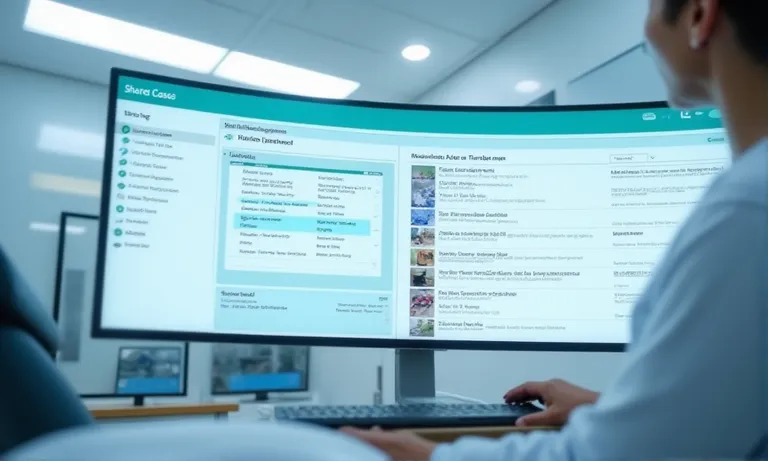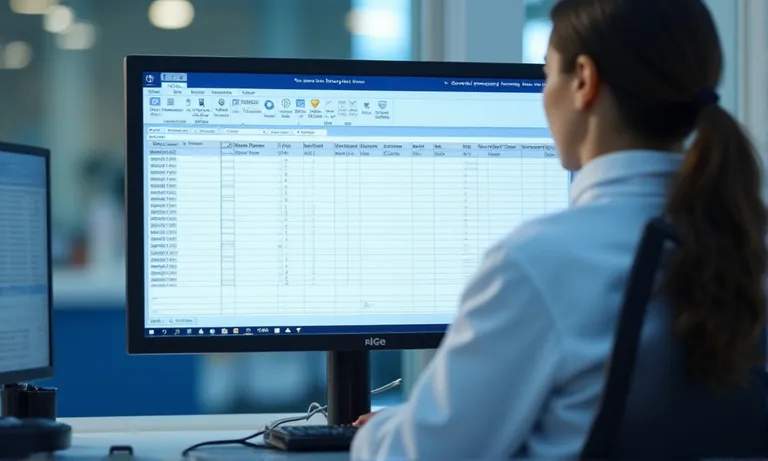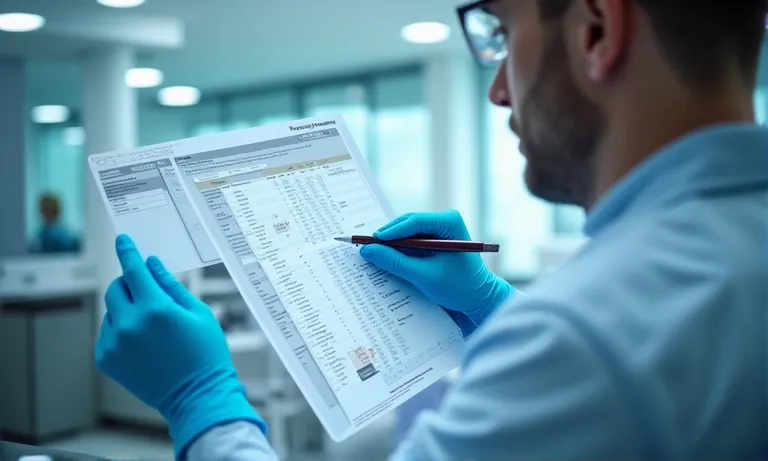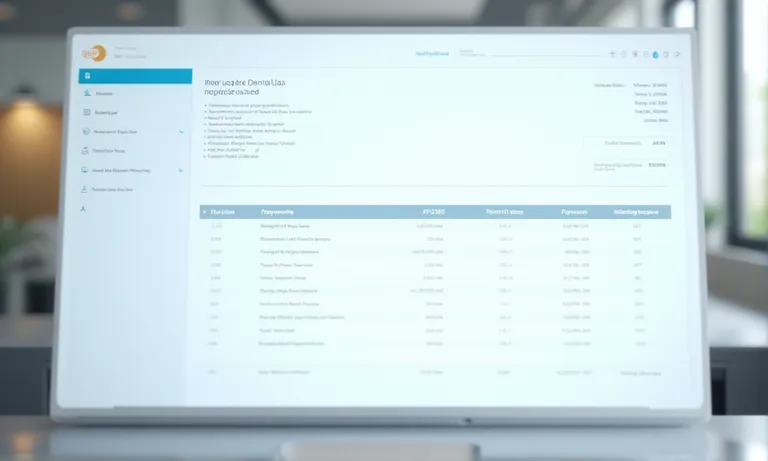Selecting the right dental lab supplier requires more than reviewing a product catalog—it involves asking the right questions before any cases are submitted. Procurement teams and practice owners need clarity on how a lab ensures consistent quality, communicates effectively, handles remakes, and integrates with digital systems. Yet many labs sound similar on the surface, making due diligence essential.
To support smarter decision-making, here are eight essential areas to explore when vetting a dental lab partner:
Certifications & QA protocols: Confirm ISO, FDA, or MDR compliance, and ask who oversees the quality process.
Turnaround time reliability: Understand average lead times, handling of rush cases, and workflow tracking transparency.
Material sourcing & traceability: Ensure ADA-approved materials, verify documentation, and identify any subcontracting risks.
Digital compatibility: Check if the lab supports your CAD/CAM formats and offers integrated workflow tools.
Communication structure: Evaluate if there’s a dedicated contact and whether your team will receive prompt, informed support.
Remake policy: Clarify remake eligibility, turnaround expectations, and root-cause transparency.
Trial or pilot option: Inquire about test cases, onboarding phases, and measurable success criteria before large-scale collaboration.
Cost transparency: Ask about fees beyond the unit price—minimums, rush surcharges, remake terms, and import costs.
These questions help uncover the true operational readiness of a lab—not just what’s promised, but how things are delivered, measured, and supported at scale. That’s where a strategic lab partner makes the difference.
What certifications and quality assurance protocols should the lab have?
Certifications and quality protocols are not just formalities—they signal a lab’s readiness for scalable, traceable, and accountable collaboration. For dental procurement teams, verifying a supplier’s regulatory and operational compliance is the first filter before deeper technical validation.

dental-lab-iso-fda-compliance-check
Is the lab ISO/FDA/MDR compliant, and can they provide documentation?
The lab should have valid documentation for ISO 13485, FDA registration (if serving the U.S. market), and MDR compliance for EU.
These documents ensure traceability, device safety, and systemic quality control.
- ISO 13485 Standard Overview: outlines requirements for medical device quality systems
- FDA Dental Device Requirements: applicable for U.S. imports
- Always ask for document version, expiration date, and scope of approval
Who oversees quality control, and how is the QC process structured?
A robust QC structure should clearly outline ownership, checkpoints, and tools used to verify output before shipment.
| Element | Description |
|---|---|
| QC Team | Should include at least one certified technician or supervisor with documented responsibility |
| Checkpoints | Incoming case inspection → Production stage QC → Final polish + shade match check |
| Documentation | Each case should be tied to digital logs, including technician ID, QC time, and material batch number |
These records help ensure not only accountability but also trend monitoring over time.
How does the lab handle remakes and case failure analysis?
Look for whether the lab has a standardized, traceable process for identifying and resolving remakes:
- Free remake policy clearly defined by criteria (e.g., lab error vs. unclear prescription)
- SLA-based response time for remake requests (e.g., within 1–2 business days)
- Root cause analysis documented for each remake trend (especially when it’s a recurring client issue)
This process should be transparent, logged, and open to client review—particularly for DSO or multi-site buyers tracking case quality over time.
✅ Certificates alone do not guarantee outcomes – TRUE
Compliance documents are necessary, but consistent delivery depends on execution-level quality protocols.
❌ As long as a lab has FDA or ISO, there’s no need to ask about QC – FALSE
Many labs hold certifications, but lack structured case-level QA mechanisms—this gap often leads to downstream rework or inconsistency.
How does the lab manage turnaround time and on-time delivery consistency?
Reliable turnaround times are foundational to a functioning lab-clinic relationship. Overseas dental labs must align production speed with clinical realities, and delays in even a small percentage of cases can create cascading impacts. Structured production schedules, tiered prioritization, and real-time tracking mechanisms are essential.

dental-lab-case-tracking-turnaround
What are the typical turnaround times for standard and complex cases?
A transparent turnaround framework is a baseline requirement. Ask for:
- Standard crown/bridge turnaround time (usually 5–7 days)
- Complex implant or full-arch cases (can range 10–15 days depending on systems)
- Clearly published timelines by product type
Many ADA Guidelines offer expected ranges by product class. Labs should benchmark against these and state their average performance.
How are rush or emergency cases prioritized and handled?
Emergency flexibility often determines whether a lab can truly scale with clinical needs.
| Service Tier | Response Strategy | Timeframe |
|---|---|---|
| Standard cases | Queued production, by order date | 5–7 working days |
| Rush orders | Pre-scheduled rush block capacity | 2–3 days |
| After-hours | Optional weekend/extended shifts | Case-by-case basis |
Labs that operate globally must provide a clear rush protocol and support timezone-sensitive cases for DSO or urgent chairside situations.
Can you track production and shipping status throughout the process?
Without real-time visibility, case bottlenecks often remain invisible until too late.
Look for labs offering:
- Case status dashboards with technician assignments
- Integrated alerts on production delays or missing info
- Real-time shipping confirmation + tracking integration
Some labs also use client portals integrated with shipping time standards for full transparency.
✅ Turnaround time is predictable when production is tiered – TRUE
Tier-based scheduling and defined blocks for rush work improve reliability across volume fluctuations.
❌ Shipping delays are unavoidable with overseas labs – FALSE
Labs with regional hubs or synchronized dispatch windows can achieve parity with domestic logistics if properly structured.
What materials and manufacturing processes does the lab use?
The quality and safety of restorations begin with the materials and extend to the processes behind them. For overseas dental labs, it is essential to demonstrate traceable sourcing, certified materials, and full disclosure on whether production is in-house or subcontracted.

dental-lab-material-verification-zirconia-pmma-alloy
Are all materials certified, traceable, and ADA-approved?
Labs must use only medically approved, biocompatible materials with valid certifications.
- Zirconia, lithium disilicate, and PMMA should be FDA-registered or ADA-recognized
- Alloy content must conform to international standards (e.g., Ni-Cr free, cobalt safe)
- Material batches should include expiration dates and lot numbers
For DSOs or regulated markets, this documentation is not optional—it’s a procurement baseline.
Can the lab provide documentation for alloy, zirconia, or PMMA sources?
A reliable supplier should be able to produce verifiable certificates for core materials:
| Material Type | Documentation Example |
|---|---|
| Zirconia | Zirconia Material Certificate Example with shade consistency data |
| PMMA | Lot traceability sheet with wear resistance test results |
| Alloy | Certificate with element breakdown and country of origin |
These documents serve not only quality purposes, but also support regulatory and audit readiness for clinical buyers.
Are restorations produced in-house or subcontracted elsewhere?
Outsourcing to third-party vendors can introduce risks to quality control, timelines, and traceability. Ask:
- Are all prosthetics produced in-house at the named facility?
- If subcontracting exists (e.g., overflow), is it disclosed and quality-verified?
- Is the production location consistent with billing origin?
✅ Material origin and handling affect long-term case performance – TRUE
Consistency in batches, proper storage, and documented sourcing prevent structural failures and discoloration.
❌ Labs can use any available material brand as long as they deliver fast – FALSE
Using non-certified or unknown-source materials can lead to allergic reactions, fractures, or case rejection.
What digital workflow capabilities does the lab support?
Smooth digital integration is essential for reducing turnaround time and minimizing human error. Overseas dental labs must support a wide range of file formats, enable collaborative interactions, and align with cloud-based systems already in use by clinics.

dental-lab-cadcam-workstation-stl-integration
Does the lab accept STL, DICOM, and major CAD/CAM formats?
Modern digital labs should handle all standard formats without requiring manual conversion.
- STL files for crown, bridge, implant frameworks
- DICOM files for radiographic alignment in guided surgery
- Proprietary CAD/CAM formats (e.g., 3Shape, exocad)
Labs should provide compatibility sheets or format capability disclosures at the onboarding phase.
Are design files reviewed by technicians or processed automatically?
While automation accelerates turnaround, human oversight ensures case viability.
✅ Technician-reviewed STL data ensures marginal clarity
Cases are flagged for distortion, improper scan paths, or missing reference data.
❌ Full automation guarantees faster output without compromise
Unscreened STL imports often lead to remakes due to undetected issues.
A hybrid model—AI pre-check + technician verification—balances speed with control.
Can the lab integrate with chairside systems or cloud-based platforms?
For DSOs or clinics with intraoral scanner systems, direct integration avoids redundant file transfers.
Typical integration flow:
- Dentist completes scan chairside → uploads via platform
- Lab receives real-time notification with case file
- Technician reviews and sends confirmation or feedback
- Case enters production once accepted
Labs integrated with systems like exocad cloud or 3Shape Communicate can provide seamless collaboration.
✅ Digital compatibility reduces friction in global workflows – TRUE
Without manual transfers or email-based uploads, labs receive cleaner data and clinics avoid delays.
❌ All STL files are equal regardless of source – FALSE
Scanner type, export settings, and post-processing steps greatly affect usability.
What are the communication and case management structures?
Effective communication isn’t just about responsiveness—it’s about having the right people, protocols, and tools to ensure each case is handled proactively. A qualified overseas dental lab should demonstrate structured case ownership and role clarity from day one.

dental-lab-case-management-dashboard-chat
Will there be a dedicated case manager or technical advisor?
High-performing labs assign a single point of contact (SPOC) per clinic or client group.
- Case manager oversees coordination and technical feedback
- Technical advisor supports complex case planning and materials consultation
- Escalation path is predefined and documented
This prevents confusion from fragmented communication.
How responsive is the team to clinical queries or adjustments?
Turnaround time for communications should follow internal SLAs. For example:
✅ Dedicated SPOC responds to queries within 12–24 hours – TRUE
This includes material clarifications, design suggestions, and remakes.
❌ Any available team member can answer any question anytime – FALSE
Lack of ownership often leads to delays or contradictory instructions.
Labs should document response times for different types of queries.
Are there structured case review forms or communication logs?
Structured templates streamline collaboration and reduce ambiguity.
| Communication Tool | Purpose |
|---|---|
| Case intake form | Captures case type, material, photos, turnaround |
| Feedback log | Documents remake reason, resolution, timestamps |
| Visual checklist | Ensures esthetic goals, shade, and margin detail are clear |
For best practice, centralized dashboards help teams monitor case status, priorities, and instructions.
✅ Case communication should be structured and trackable – TRUE
Unstructured notes or verbal messages easily get lost, especially across time zones.
❌ Labs can handle cases efficiently with just email threads – FALSE
Email-only workflows often lead to version control issues and miscommunication.
What is the lab’s remake and complaint handling policy?
Reliable remake policies are critical for managing clinical risk and maintaining trust. Overseas dental labs should outline remake criteria, resolution timelines, and provide data transparency for repeated errors.

dental-lab-sla-remake-dashboard
What qualifies for a no-cost remake, and how many are covered?
Labs typically define remake eligibility by material type, turnaround stage, and clinical input accuracy.
| Criteria | Covered? |
|---|---|
| Internal technical error | ✅ Full remake, no charge |
| Incompatible STL or missing bite | ❌ Client-corrected, billed again |
| Shade or margin mismatch (if specs provided) | ✅ Case reworked or reprinted |
| Client-side prep change post-design | ❌ Treated as new order |
Top labs clearly document remake policies in their QA policy documentation.
What is the SLA for response to remake requests?
Clear timelines help manage expectations and case rescheduling.
- Acknowledge remake within 24 hours
- Provide resolution plan within 48 hours
- Urgent remakes enter express lane if justified
For repeated issues, some labs assign case manager follow-up within 72 hours.
Does the lab provide root-cause reports for repeated remakes?
Top-performing labs maintain a feedback loop for quality improvement.
✅ Root cause analysis identifies systemic lab or clinician errors – TRUE
This includes design misalignment, margin inconsistency, or scan quality issues.
❌ All remakes are isolated incidents needing no further review – FALSE
Recurring issues often point to workflow gaps or documentation flaws.
Labs should offer root-cause summaries when a case fails twice or more.
Can the lab support a pilot case or trial onboarding phase?
Pilot phases allow procurement teams to validate alignment before committing to full-scale outsourcing. Overseas dental labs with structured trial processes demonstrate maturity, transparency, and readiness for long-term collaboration.

dental-lab-trial-case-review-dashboard
Is there an option to submit a test case or trial batch?
Structured pilot programs often include:
- 1–3 sample cases to test materials, margins, esthetics
- Use of standard forms for consistency
- Pre-aligned turnaround times and documentation protocol
- Shared checklist for intake and approval
Some labs allow trial onboarding for 30 days before contract finalization.
What performance metrics will be tracked during the trial?
Labs should transparently share key indicators to help clients evaluate fit.
| Metric | Purpose |
|---|---|
| Remake rate (%) | Measures quality precision |
| On-time delivery rate | Tracks SLA consistency |
| Case notes completeness | Evaluates clinical information flow |
| Communication response time | Benchmarks support efficiency |
These KPIs create an objective foundation for selection.
Will the onboarding include SOP alignment and feedback checkpoints?
Alignment ensures clinical and lab teams speak the same “workflow language”.
- SOP walkthrough on turnaround, design notes, file naming
- Feedback after each case: margin, fit, esthetics
- 1–2 checkpoints during onboarding to revise expectations
- Shared wrap-up report for trial conclusion
This structured feedback loop prevents scope drift and sets shared standards.
Are all costs and payment terms clearly structured?
Transparent pricing is the foundation of a predictable lab partnership. Before finalizing any agreement, dental procurement teams should ensure that the lab offers full visibility into all cost components, payment timelines, and non-obvious charges.

dental-lab-cost-breakdown-invoice-dashboard
Are there minimum order volumes, rush fees, or hidden charges?
Labs may present low unit costs but add significant surcharges elsewhere. Key items to verify:
- Minimum monthly spend or case count
- Rush or expedited handling fees
- Model/die duplication or remake costs
- Shipping and insurance markups
- Custom shade matching surcharges
What are the payment terms and invoicing cycles?
Payment structures vary. Typical terms include:
| Term Type | Description |
|---|---|
| Net 15 / 30 / 60 days | Post-invoice due periods |
| Monthly consolidated | One invoice for all cases monthly |
| Prepaid / Retainer model | Upfront credits for discounted rates |
Some labs offer flexible terms during onboarding or high-volume periods.
Are shipping, import duty, and remakes reflected transparently?
Labs working globally must include:
- International shipping cost estimates
- Any duties or customs fees by destination
- Clear remake policy: which cases are no-charge
- What isn’t covered: clinician error, poor prep, STL mismatch
✅ Transparent TCO structures reduce long-term disputes – TRUE
Predictable billing enables better budget control and avoids surprises.
❌ Unit price alone reflects the true cost – FALSE
Total cost of ownership includes workflow friction, remake frequency, and payment delay risks.
Choosing the right dental lab supplier isn’t just about unit price—it’s about aligning on quality, communication, and workflow efficiency. When these foundations are clear, outsourcing becomes not only scalable but dependable.


